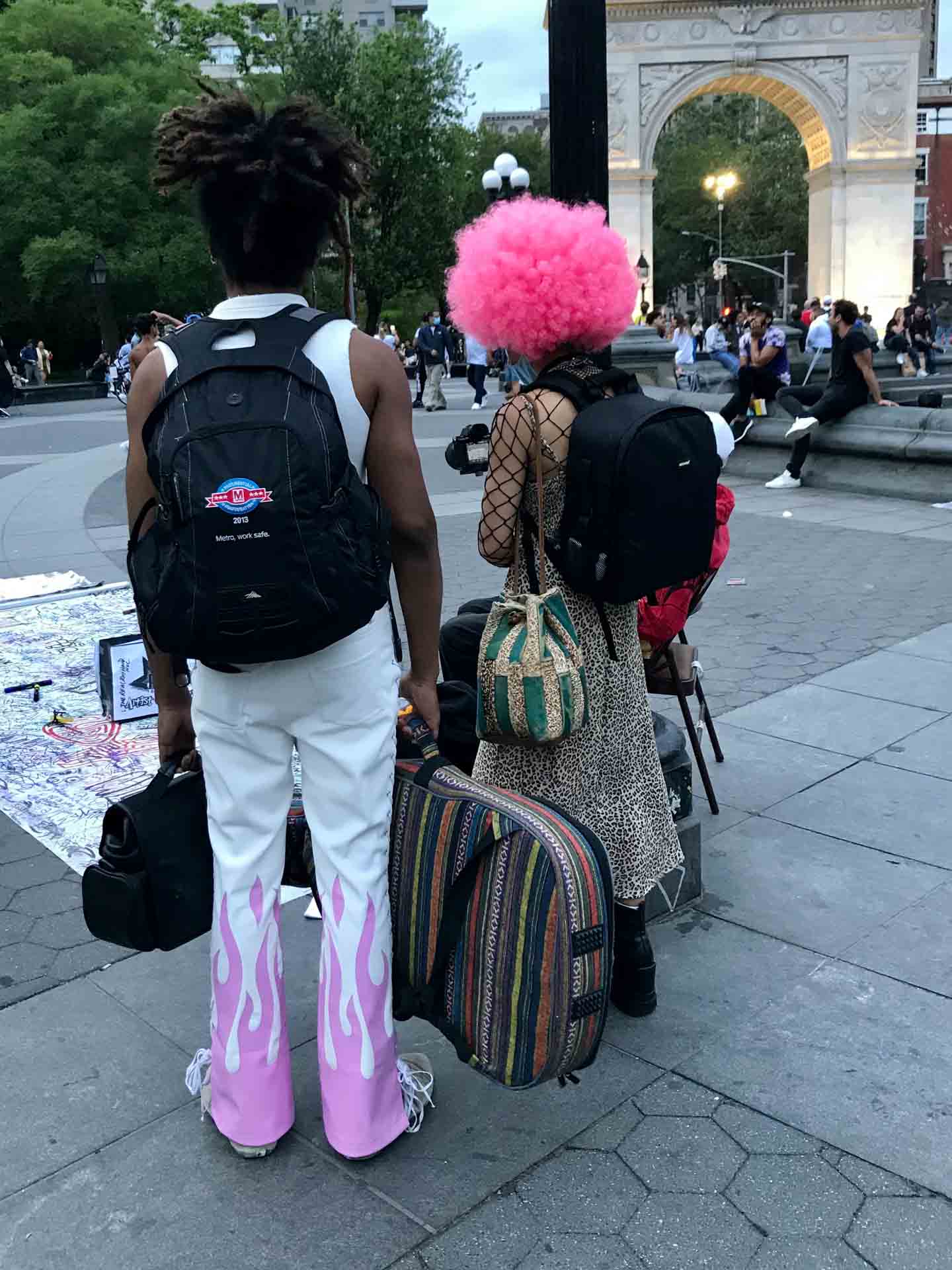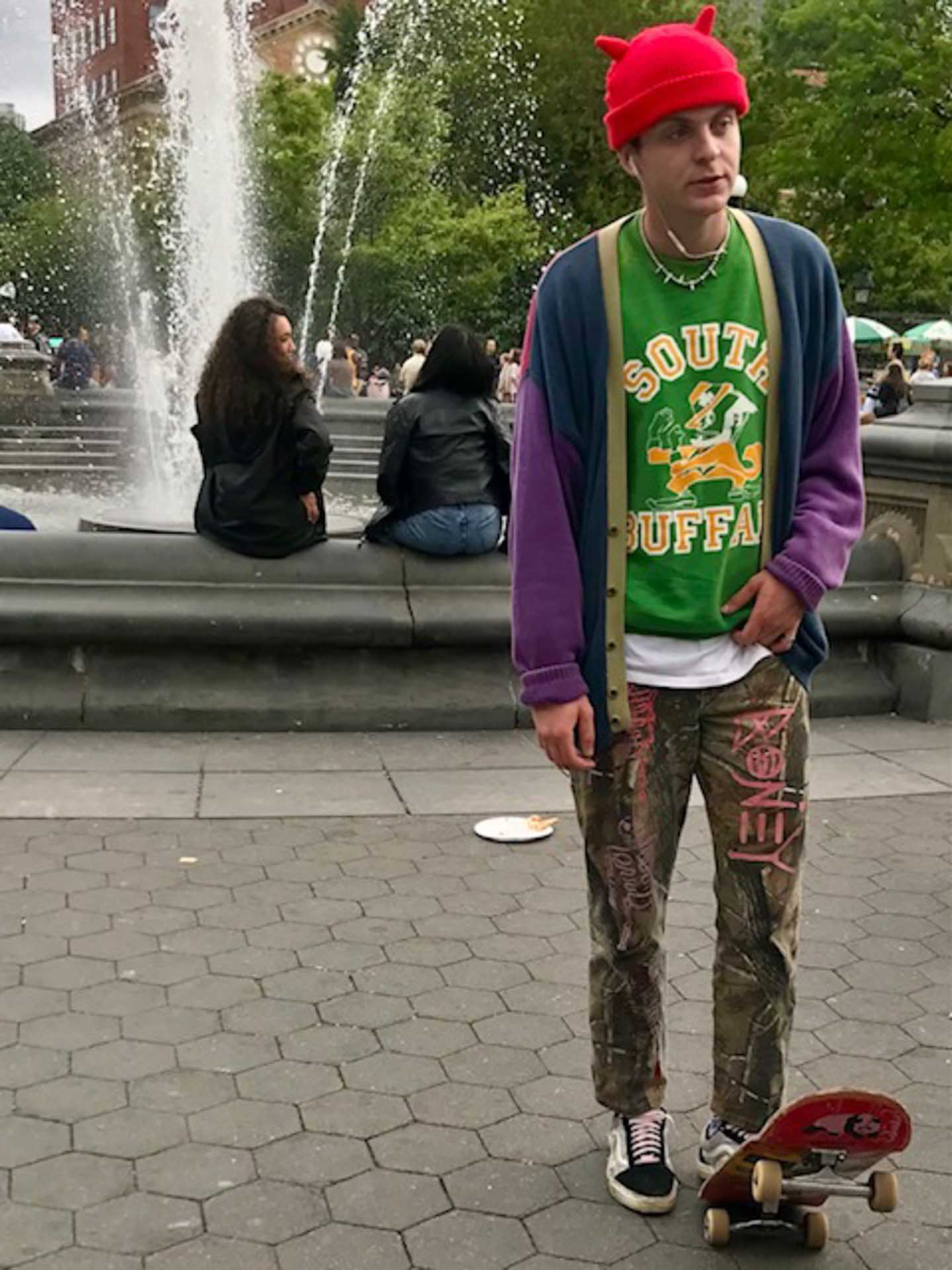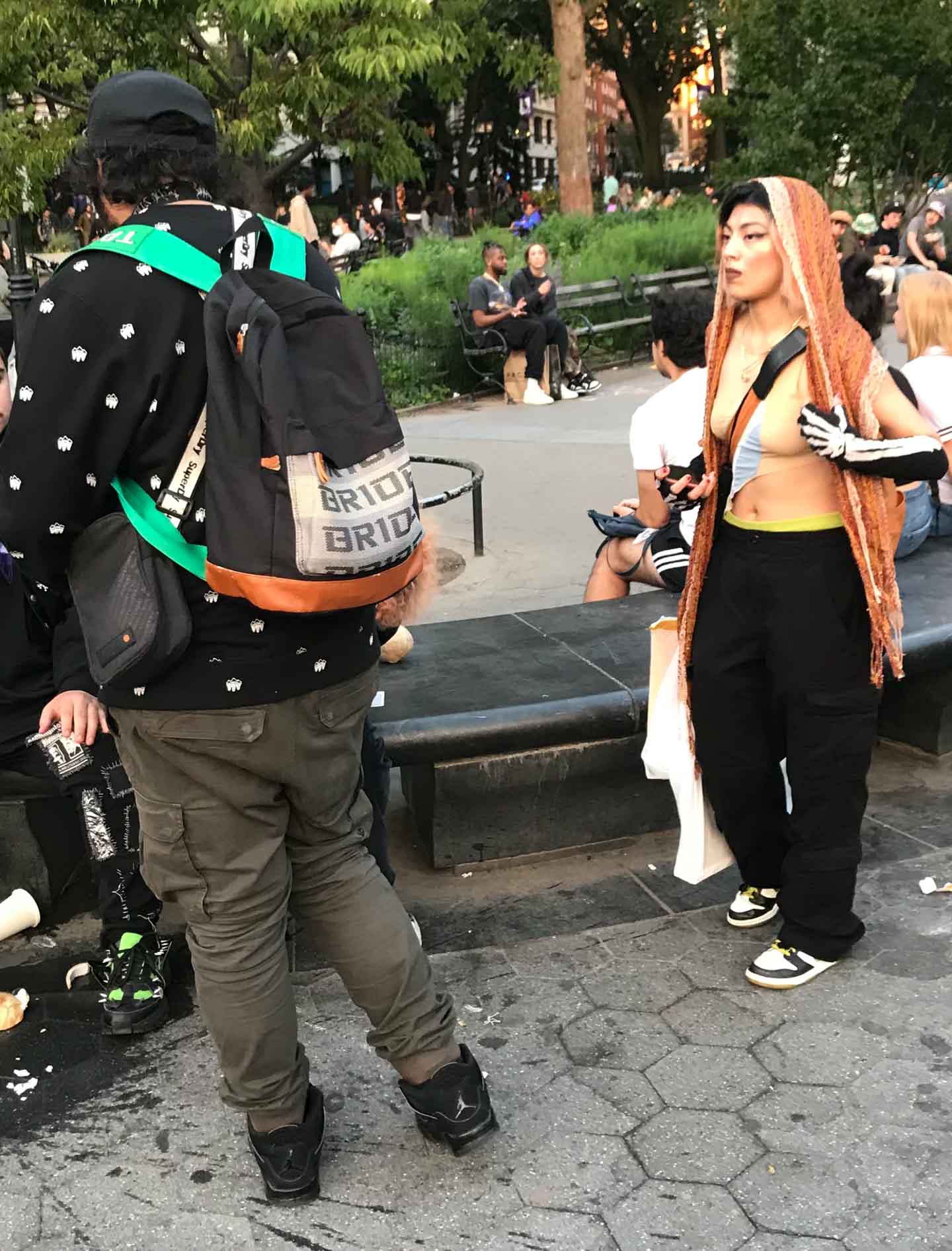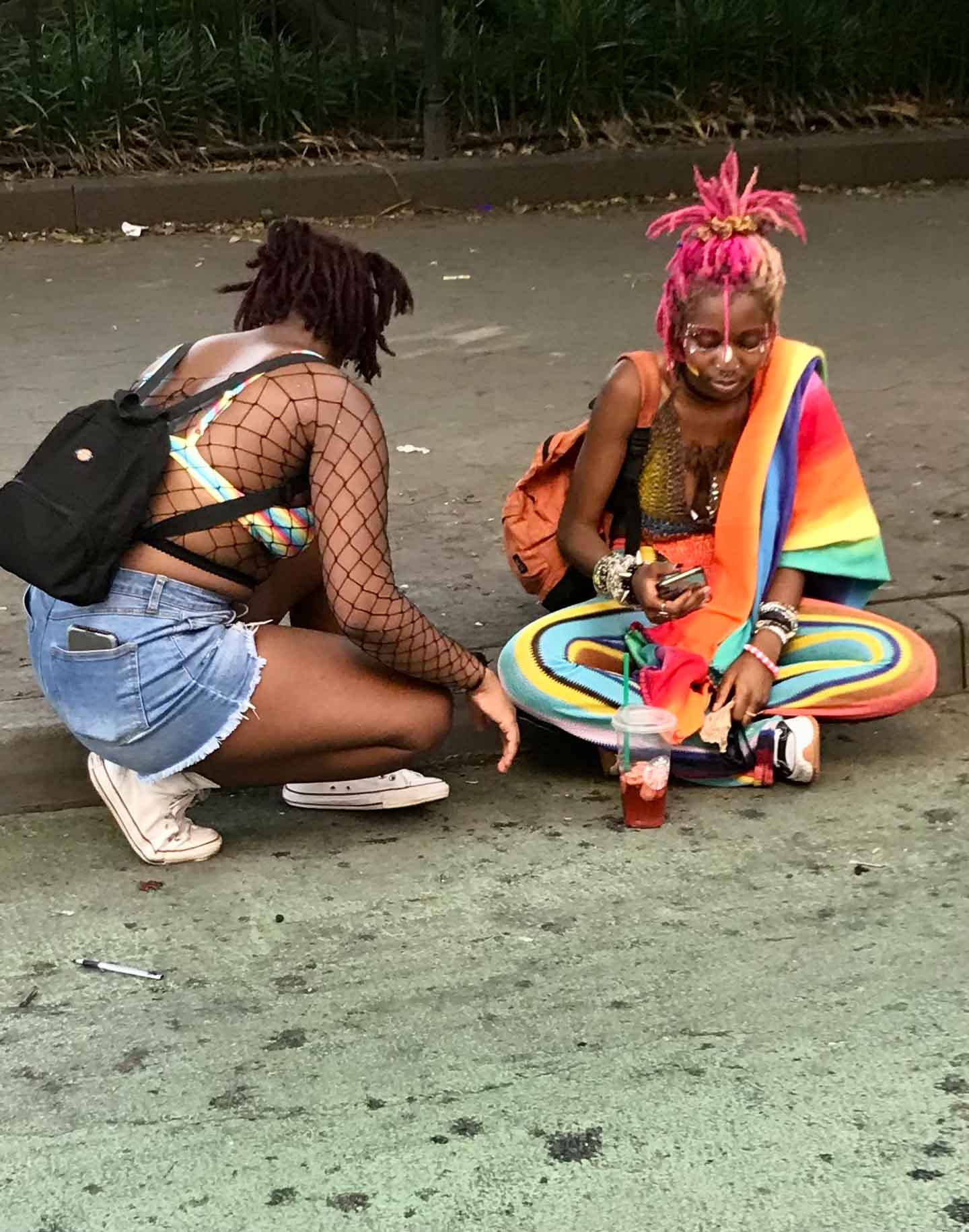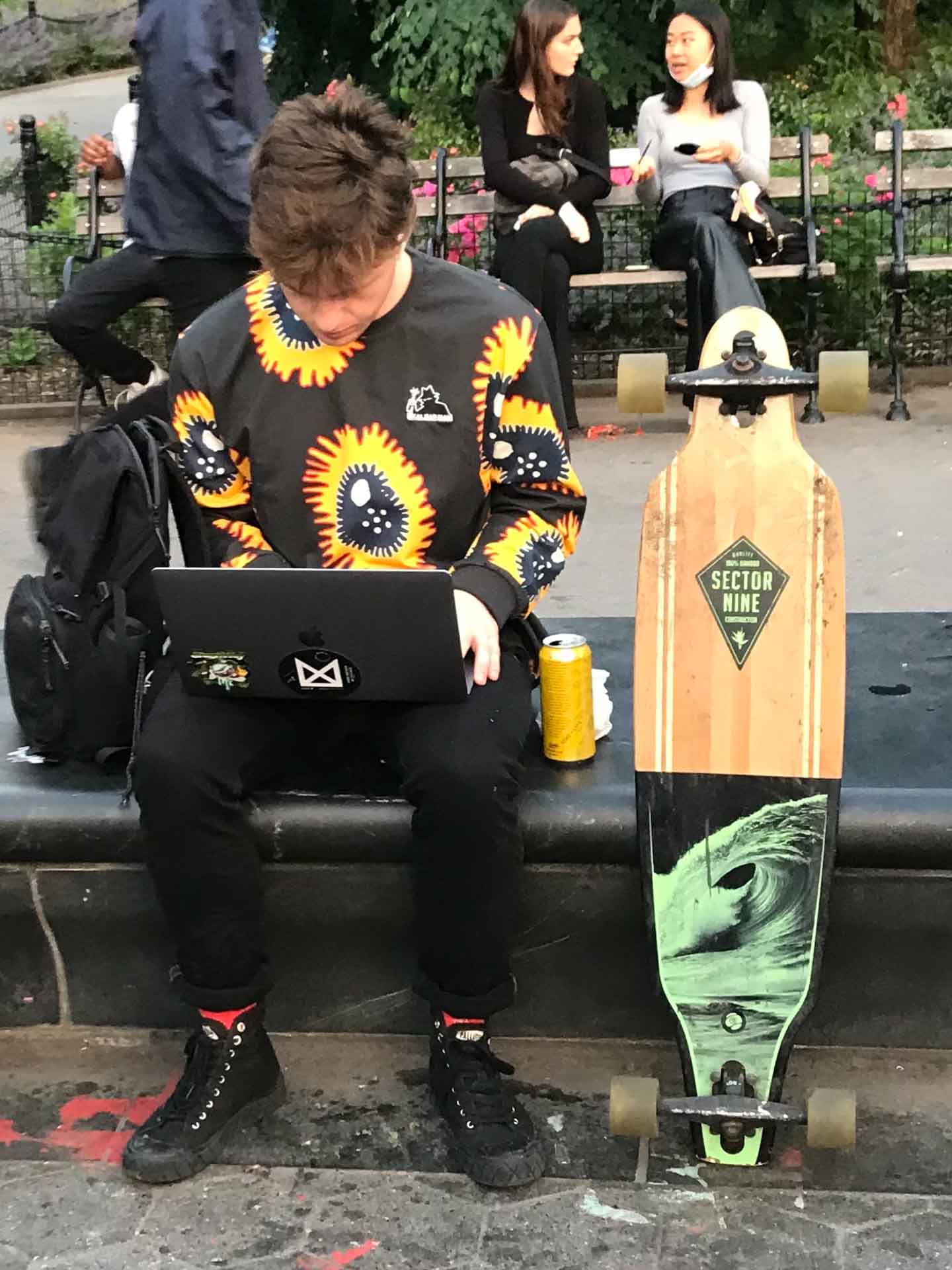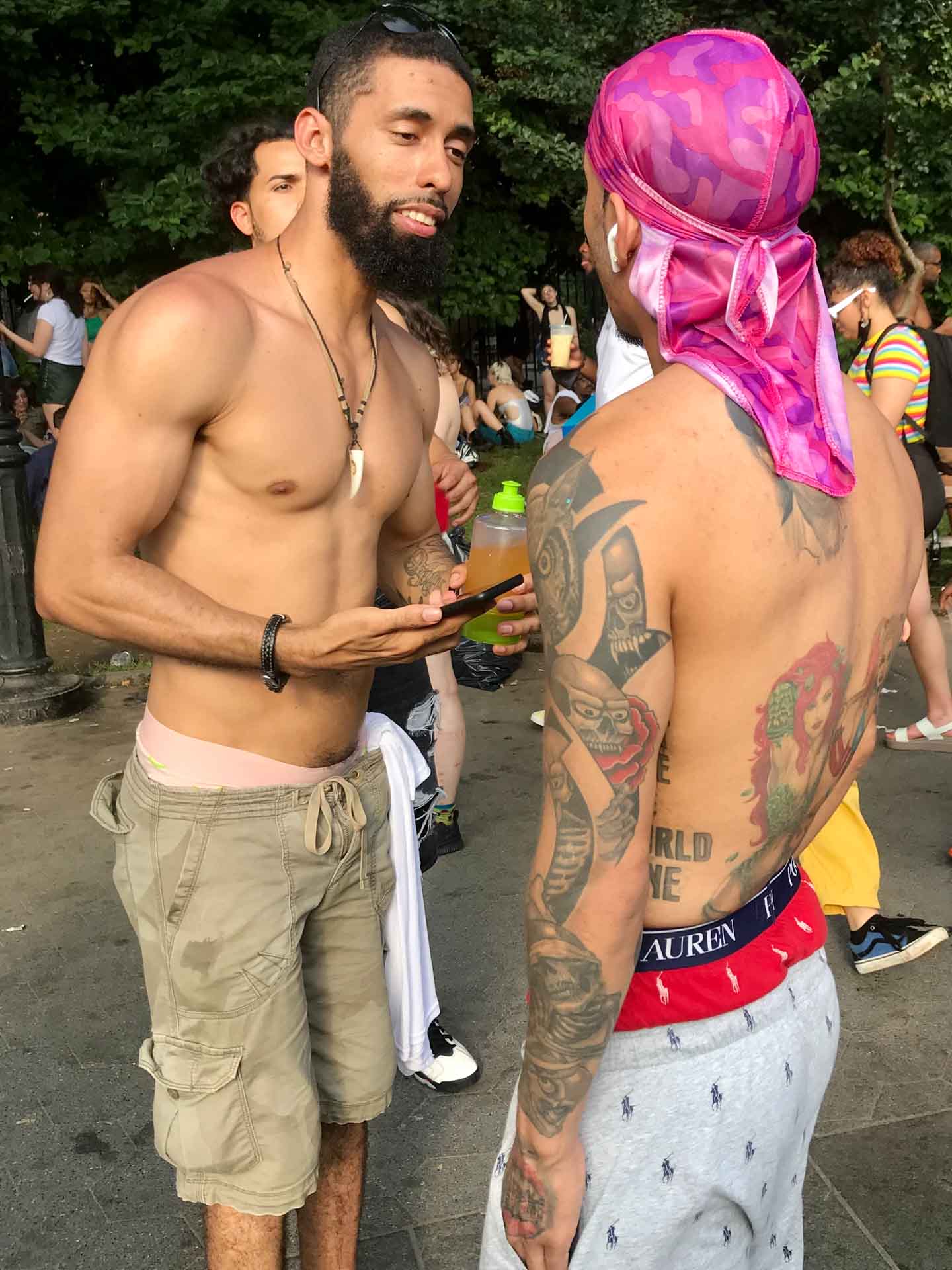“The rotting core of the Big Apple.” That’s how the British Daily Mail recently described the scene in New York’s iconic Washington Square Park. To the outraged readers of the Mail and our own New York Post, the park has become “a no-go zone for law-abiding locals.” Well, I’m a local, and I see something very different.
Washington Square is my neighborhood park. I can’t account for what happens late at night. According to the press, there has been riotous behavior, with bottles thrown at cops, brawls, and even stabbings. There are those who want to see a skateboard ban in the park, and restrictions on how many people can be there. These good citizens are aiming at the one source of disturbance they can control: the young. But the atmosphere of frantic abandon is too widespread here to be controlled. Many people have emerged from lockdown with intense pent-up feelings, and challenges to the police make law enforcement tricky. Not long ago, a deranged man smashed the windows of my favorite diner and decked the 73-year-old cook. Hundreds of dirt bikes have blatted up the avenue under my window at 1 am. Bursts of impromptu fireworks pierce the slats of my blinds, and I often hear cries of unleashed rage. In the wee hours, I don’t go out wearing flowers in my hair.
But there’s a racial subtext to what is taking place in the park, since the crowd includes many young people of color spilling into zones of the city where they haven’t felt welcome before. Race and class have always been flash points in disputes over urban turf, but in Greenwich Village the rules have usually been lightly applied, even if the mixing doesn’t extend to the high-rent apartments. Washington Square itself has a storied history of free expression. The mood may be hard-edged after midnight, but at twilight, when the sunset is golden in the windows of innumerable buildings, it’s mellow yellow. I have seen no violence but lots of toking and flirting—cruising among people of all cultures, genders, and sexualities, and hair colors that defy the human genome.
I head to the park on warm evenings, flashing on the fantasy that I am witnessing the arrival of a new Summer of Love. Gazing at the careening crowd, seeing a pink-haired hottie or a twink announcing his vegetarianism on his T-shirt, there are moments when I’m lost in the lyrics of a hippie song that I hated back in 1967, the last time people spoke of such utopian things. “There’s a whole generation with a new explanation. People in motion. People in motion.”
I’m a cultural journalist, and my profession isn’t known for its caution. Ten fans and a sociologist are enough to declare a trend. Still, something is happening in Washington Square Park. It’s inchoate, but it goes beyond the mere spectacle of hipsters partying at the behest of the Style section. Susan Sontag once defined a sensibility as a set of values that haven’t yet hardened into a style. That’s what I notice here. Think Whitman—the yawp, the body electric, the singing of self—but charged with skateboard twirls, wheelie maneuvers, anime extravagance, and pop-up demos that add depth to the vuvuzela din of loudspeakers from cars wrapped in LED lights, roaring up the streets.
Popular
"swipe left below to view more authors"Swipe →
Who are these denizens of the park? Students pale from months of nonstop gaming, dealers hawking their weedy wares, Bronx bros doing Downtown, climate activists sneaking hungry glances at a hot-dog stand, street people napping in a safe place. All of them are there, along with wannabe comics from the Latino belt of Queens, honing their routines around the fountain, as John Leguizamo once did. Artists show on the walkways; some of their work is faux Basquiat, some of it post-graffiti, but some of it is just very good. And there is constant music in every genre but polka. In the middle of it all, the pianist who manages to lug his bulky instrument into the park plays a Debussy étude. He apologizes for doing so poorly—he’s been out of practice for a year. “Don’t give me money,” he insists. How can you resist that pitch?
There is no common style. No two people dress alike. Blacks and Latinos are central, and their sense of color and shape has influenced the sartorial blend. But so has skateboard chic, remnant punk, pride-proclaiming rainbow wear, and neo/retro tie-dye. That’s the point. Part of the mix is what you put together on your body: the ink, the sneakers, the cut. Everyone is wearing their own couture. It’s about dressing for an Instagram moment by making things that aren’t supposed to be worn together fit into a unique whole. The result is Prince meets Bowie meets Bjork meets Kurt Cobain. Think of it as carnival in Rio colliding with the Easter Parade.
The youth attire of 1967 would look like uniformity in this mashup. But there are values that all its elements share. The feeling is less macho than the thug look, more personalized than man buns and brand-name murses. Gender is improvisation here—a jazz of the body. This liberation from standardized attire could only occur in Greenwich Village, the incubator of bohemia in New York. It could only happen in a city where a third of the residents are foreign born, and in the wake of the new movement for racial justice. Above all, the scene in the park is a statement of individuality within unity, a fitting metaphor for the summer of solidarity. But its attitude toward creativity seems very Summer of Love. That’s why, though I’m not about to sport platinum hair (or any hair), and despite being old enough to remember the summer of ’67, I feel welcome here.
How did Washington Square Park become the Rialto of this scene? For one thing, many of the protest marches that took up so much energy this year ended up here. People wandered through the park in a fired-up state, and the impulsiveness of that mood lent itself to socializing. Face masks made eyes seem full of feeling. Shit happened. Fashion followed. People dressed up to hang out around the fountain.
But that prompts the question: Why this park? Part of the answer has to do with an event that occurred in this place 60 years ago. 3000 beatniks riot in village read the headline in the New York Mirror on April 16, 1961. Bob Dylan was one of the protesters against the decision to ban singing in the park, a move that would have dispersed a folk-music scene that had drawn young people from across the city. Many of these threats to public order were bridge-and-tunnel people like me, willing to ride the subway for an hour in order to strum a guitar (or in my case, huff into a kazoo). Those gatherings would become a pillar of rock music in the ’60s. So there’s a well-earned mystique about the place, and now it hosts the latest version of this spirit. I call it woke bohemianism.
Woke because, like the youth movement of the ’60s, it intersects with the struggle for racial justice. It’s far more inclusive and more demotic than the milieu I knew as a youth, but it draws from the same basic beliefs. A bohemia, after all, is not just an enclave of artists auditioning for galleries. Under the pretensions, it’s a social setting where different castes and classes meet, a brazen violation of the separations and commodifications that make bourgeois life such a rancid brew. This tradition, which has flourished in Greenwich Village since the ’20s, has been driven underground by waves of gentrification, glassy towers, and spotlessly restored brownstones; shops with a perfect pair of Italian shoes in the window, restaurants that have never served a milk shake, massive dorms filled with the NYU students who arrive every fall, some in limos—and in the remaining rent-stabilized apartments, people like me. Amid the Euro-trash boutiques, the bohemian sensibility has survived, if only as a potential. That tradition of sex and drugs, noise and politics, that mélange of misfits persists in the image of Washington Square Park. It may be dormant, but it has never died, and, under the auspices of a generational crisis, I think it’s back.
There are places like this in cities all across the nation, special parks and plazas with histories of protest. What happens here, in the media capital of America, could spread, much as folksinging did in the early ’60s, drawing those—and there are millions—who think that hanging out in such a spot has something to do with freedom and possibility.
Last evening, I wandered lonely as a ganja cloud through the park. A young man with peach-plump cheeks sized me up and started a conversation. I told him I was too stoned to engage. “Even better,” he replied.
I stroked his shoulder. “This time, make it right,” I said.

